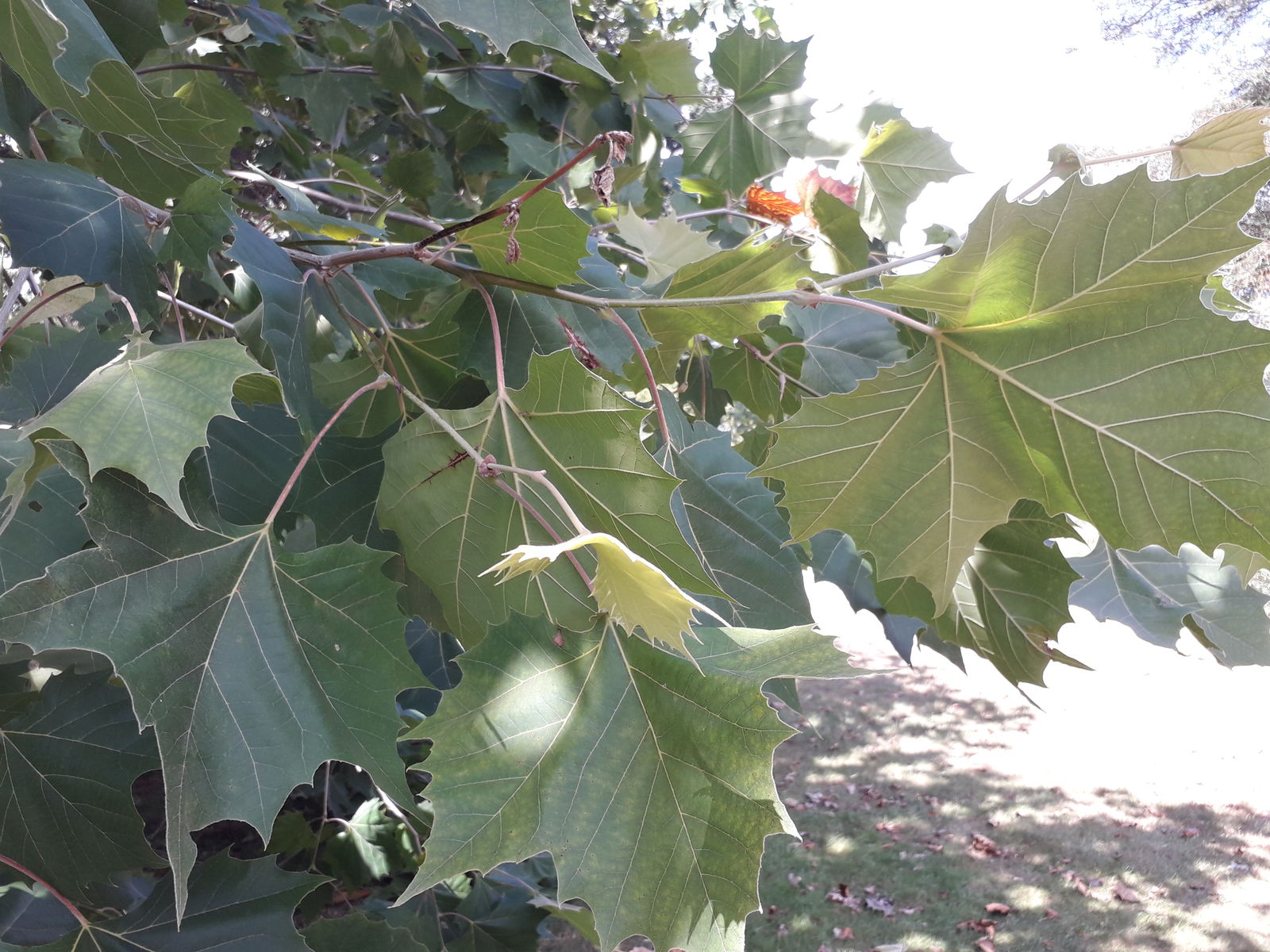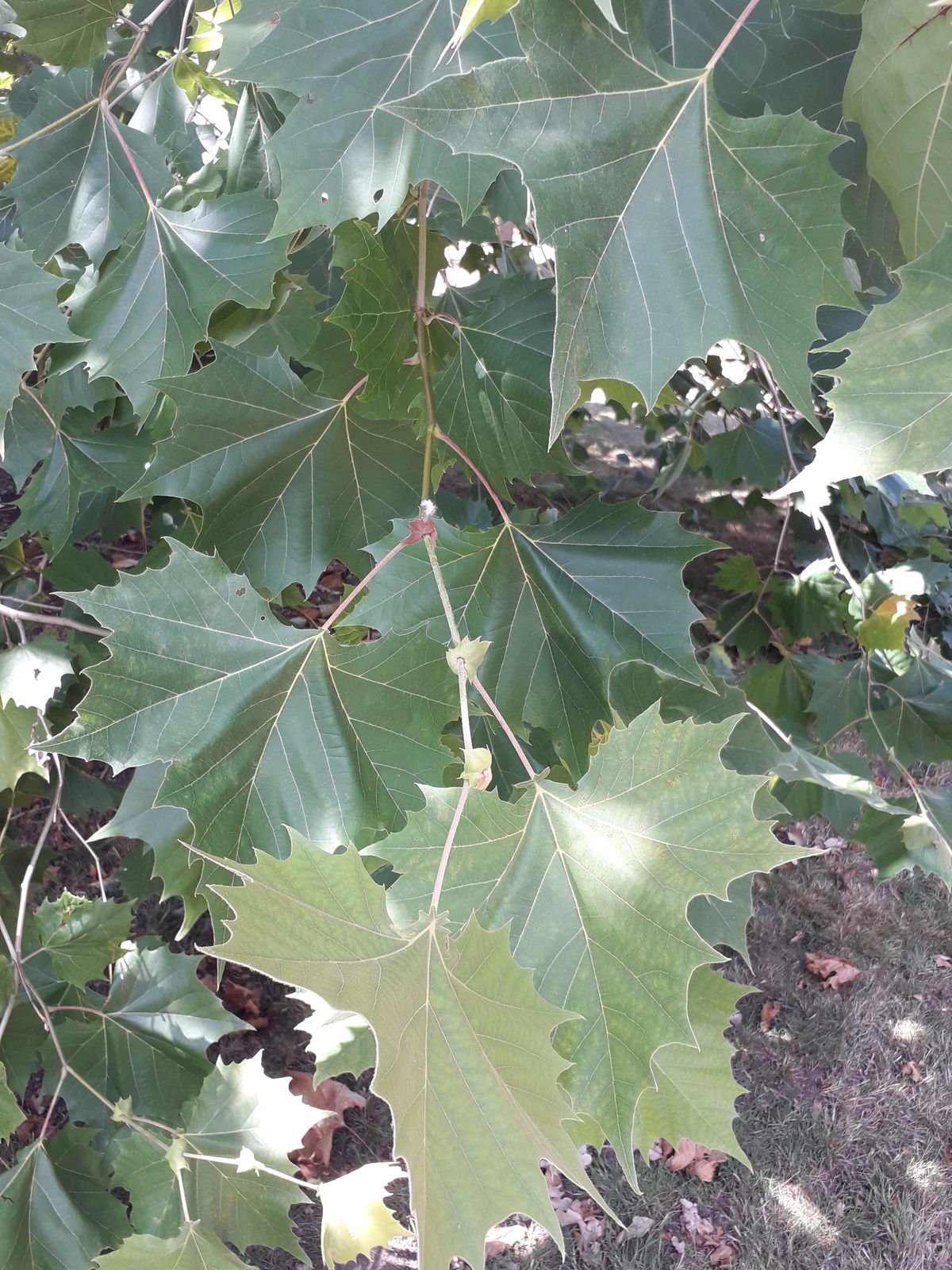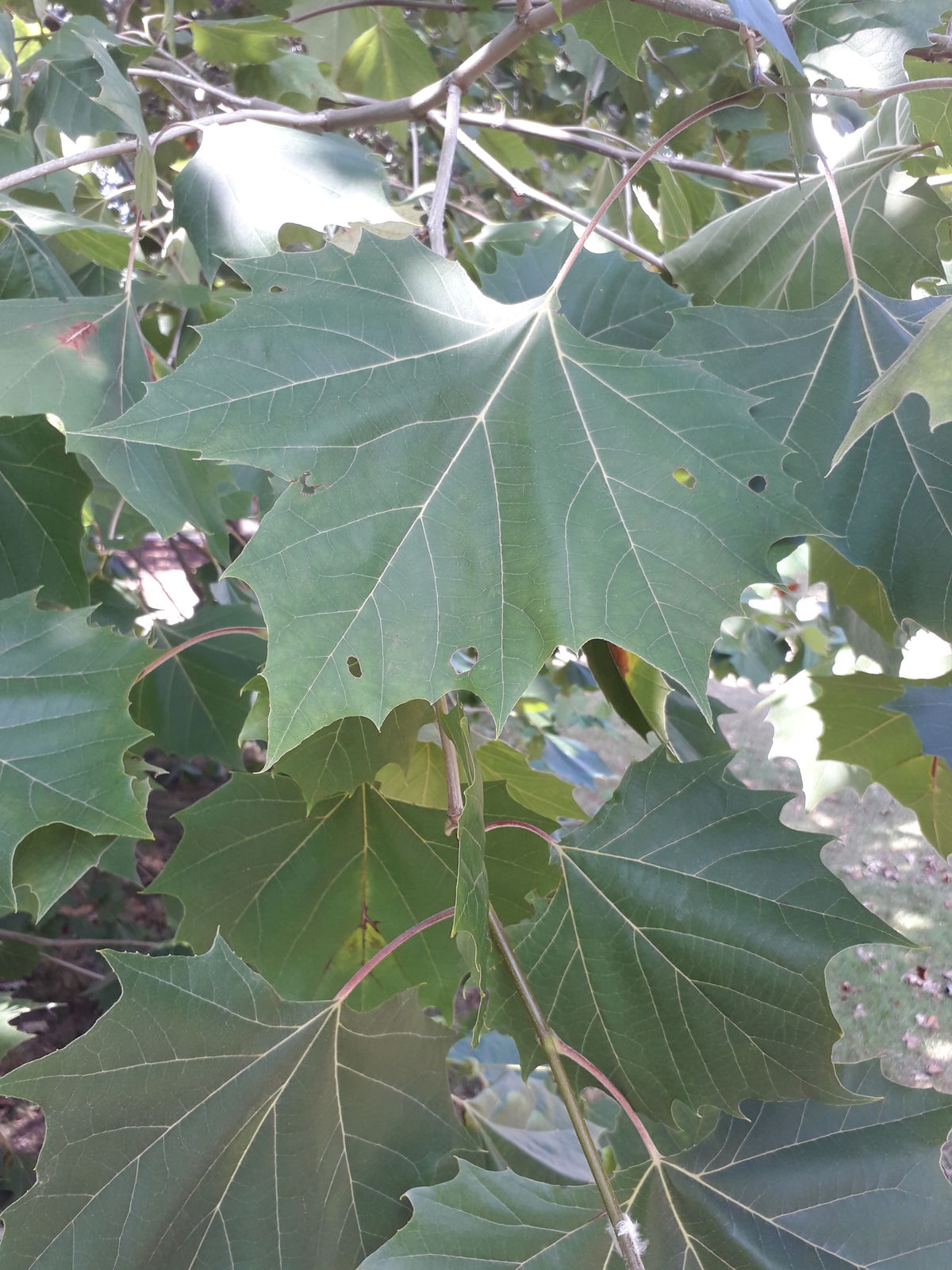Family: Platanaceae
Author: L.
Bibliography: Sp. Pl.: 999 (1753)
Year: 1753
Status: accepted
Rank: species
Genus: Platanus
Vegetable: False
Observations: SE. Canada to C. & E. U.S.A.
Description
The Buttonball, scientifically known as Platanus occidentalis, is an impressive and majestic tree that holds significant ecological and cultural value across its native range. This species is widely recognized for its towering height, broad canopy, and distinctive shaggy bark that peels away in patches, revealing a mosaic of colors underneath.
The Buttonball is native to Southeastern Canada and extends down through the Central and Eastern regions of the United States. It thrives in a variety of habitats but is particularly fond of moist, well-drained soils commonly found alongside rivers and streams. This adaptability to wet environments makes it a crucial species for riparian habitats, where it plays an important role in stabilizing soil and reducing erosion.
One of the most striking features of Platanus occidentalis is its leaves. Large and palmately lobed, they provide extensive coverage, casting a wide shade that has made this tree a popular choice for parks and urban landscapes. These leaves turn a beautiful golden-brown in the fall, adding to the seasonal beauty of the areas where it grows.
Buttonballs are also recognized by their spherical fruits, which dangle like ornaments from the branches. These fruits start as greenish balls in the summer and mature into brown, ball-like seed clusters by autumn. They often persist on the tree through winter, providing a source of food for various bird species during the colder months.
Historically, the Buttonball has been highly valued for its timber. The wood is sturdy and was traditionally used in furniture-making, flooring, and even for constructing tools. The unique appearance of its grain also makes it popular for veneer and artistic woodworking projects.
Ecologically, Platanus occidentalis is a vital component of its native ecosystems. It provides habitat and food for numerous wildlife species, including birds, insects, and mammals. Its deep root systems help maintain water quality by filtering pollutants and its extensive foliage supports biodiversity by offering shelter and nesting sites.
Though the Buttonball remains widespread, it faces certain challenges. Urban development and climate change pose threats to its natural habitats. Conservation efforts are essential to ensure that this iconic tree continues to thrive and support the ecosystems and communities that depend on it.
In summary, the Buttonball or Platanus occidentalis is a remarkable and resilient tree that plays a multifaceted role in the landscapes of Southeastern Canada and the Central and Eastern United States. Its ecological significance, historical usage, and striking physical characteristics make it a true botanical treasure.
Common Names
Eng: american plane, american planetree, american sycamore, buttonball, buttontree, buttonwood, eastern sycamore, sycamore, american plane tree, american plane-tree, buttonball tree
Deu: nordamerikanische platane
Fra: platane, platane d’occident, platane occidental
Swe: amerikansk platan
Por: plátano
En: Buttonball, Buttontree, Buttonwood, Eastern sycamore, American plane, American planetree, American sycamore, Sycamore, American Plane Tree, American plane-tree, Buttonball tree
Ar: دلب غربي
Az: Qərb çinarı
Br: Platan-ar-C’hornôg
Bg: Западен чинар
Ca: Plàtan d’Amèrica
Zh: Xuan ling mu, 一球悬铃木, 美桐
Hr: Američka platana
Cs: Platan západní
Nl: Westerse plataan
Et: Lääneplaatan
Fi: Amerikanplataani
Fr: Platane d’Occident, Platane, Platane occidental, Platane d’Amérique
Gl: Plátano occidental
De: Nordamerikanische Platane, Amerikanische Platane
He: דולב מערבי
Hu: Nyugati platán
Ko: 양버즘나무
Mk: Западен чинар
No: Amerikaplatan
Fa: چنار آمریکائی
Pl: Platan zachodni
Pt: Plátano
Ru: Платан западный
Sk: Platan západný
Sv: Amerikansk platan
Zh-tw: 美桐
Zh-hant: 美桐
Tr: Batı çınarı
Uk: Платан західний
Synonyms
- Platanus orientalis var. occidentalis ((L.) Kuntze)
- Platanus densicoma (Dode)
- Platanus excelsa (Salisb.)
- Platanus lobata (Moench)
- Platanus occidentalis f. attenuata (Sarg.)
- Platanus vulgaris var. angulosa (Spach)
- Platanus occidentalis var. densicoma ((Dode) Château & Chassignol)
- Platanus integrifolia (K.Koch)
Distribution
- Alabama (native)
- Arkansas (native)
- Connecticut (native)
- Delaware (native)
- District of Columbia (native)
- Florida (native)
- Georgia (native)
- Illinois (native)
- Indiana (native)
- Iowa (native)
- Kansas (native)
- Kentucky (native)
- Louisiana (native)
- Maine (native)
- Maryland (native)
- Masachusettes (native)
- Michigan (native)
- Mississippi (native)
- Missouri (native)
- Nebraska (native)
- New Hampshire (native)
- New Jersey (native)
- New York (native)
- North Carolina (native)
- Ohio (native)
- Oklahoma (native)
- Ontario (native)
- Pennsylvania (native)
- Rhode I. (native)
- South Carolina (native)
- Tennessee (native)
- Texas (native)
- Vermont (native)
- Virginia (native)
- West Virginia (native)
- Wisconsin (native)
- Ecuador (introduced)
- North Caucasus (introduced)
- Transcaucasus (introduced)
- Turkmenistan (introduced)
Additional Images
Fruit
Taken Sep 29, 2019 by dani (cc-by-sa)
Taken Jan 5, 2021 by Sabina Hartmann (cc-by-sa)
Taken Jan 5, 2020 by Oktay Cihan (cc-by-sa)
Taken Nov 16, 2019 by Ha Anna (cc-by-sa)
Taken Nov 30, 2021 by Esuma (cc-by-sa)
Bark
Taken Apr 20, 2014 by Andrzej Konstantynowicz (cc-by-sa)
Taken Oct 30, 2019 by Павлова Ольга (cc-by-sa)
Taken Dec 8, 2002 by Павлова Ольга (cc-by-sa)
Taken Jul 1, 2019 by Jorge (cc-by-sa)
Taken Oct 5, 2019 by Alfred Hoth (cc-by-sa)
Habit
Taken Oct 10, 2022 by Herman Van Boxem (cc-by-sa)
Taken Oct 10, 2022 by Herman Van Boxem (cc-by-sa)
Taken Oct 24, 2021 by Decobert Didier (cc-by-sa)
Taken Jan 5, 2021 by Sabina Hartmann (cc-by-sa)
Taken Nov 21, 2019 by Sabina Hartmann (cc-by-sa)

© copyright of the Board of Trustees of the Royal Botanic Gardens, Kew.

© copyright of the Board of Trustees of the Royal Botanic Gardens, Kew.

© copyright of the Board of Trustees of the Royal Botanic Gardens, Kew.
Leaf
Taken Nov 21, 2019 by Sabina Hartmann (cc-by-sa)
Taken Nov 21, 2019 by Sabina Hartmann (cc-by-sa)
Taken Dec 13, 2020 by Rachel (cc-by-sa)
Taken Jul 1, 2019 by Jorge (cc-by-sa)
Taken May 22, 2022 by 𝟙𝔻 𝕕𝕔𝕘𝕥 (cc-by-sa)
Flower
Taken Oct 15, 2018 by hago (cc-by-sa)
Taken Aug 1, 2019 by jid (cc-by-sa)
Taken Aug 18, 2021 by William Coville (cc-by-sa)
Taken Jan 21, 2020 by Nathalie Kaux (cc-by-sa)
Taken Apr 30, 2013 by EOL − bendingtree (cc-by-nc)
Other
Taken Aug 10, 2022 by Francisco Javier Inserte (cc-by-sa)
Taken May 23, 2020 by Aaron Harp (cc-by-sa)
Taken Feb 12, 2021 by Eli Small (cc-by-sa)
Taken Jan 7, 2020 by Koen Martens (cc-by-sa)
Taken Jul 13, 2019 by Castillo DrG (cc-by-sa)
Sources
- WFO (No URL)
- IPNI (No URL)
- GBIF (https://www.gbif.org/species/3152820)
- POWO (http://powo.science.kew.org/taxon/urn:lsid:ipni.org:names:685871-1)
- PlantNet (https://identify.plantnet.org/species/the-plant-list/Platanus occidentalis L.)
Specifications
Growth form: Single Stem
Growth habit: Tree
Growth rate: Rapid
Growth
Ph maximum: 6.5
Ph minimum: 4.9
Light: 8
Atmospheric humidity: 7
Bloom months: [‘apr’, ‘may’]
Soil nutriments: 6






























